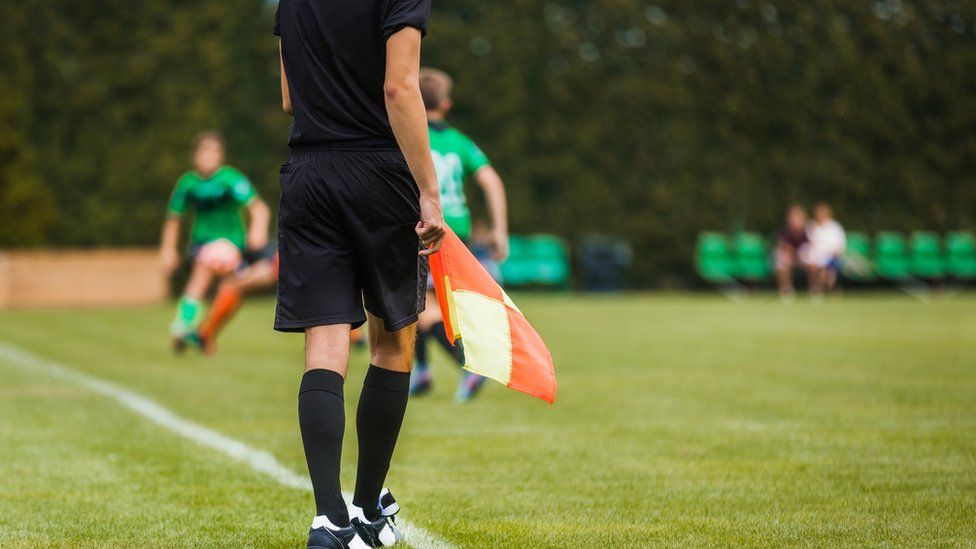The offside rule in soccer is a concept that has perplexed players, coaches, and fans alike for generations. It’s a law that has sparked heated debates, controversies, and even changed the course of matches. In this comprehensive guide, we’ll delve into the origins of the offside rule, its evolution, and its practical applications on the pitch.
READ ALSO : Unveiling Ancient Olympic Sports Lost to Time: A Fascinating Exploration
A Brief History of the Offside Rule
The offside rule has its roots dating back to the early days of soccer. In the mid-19th century, when the game was still in its infancy, players were allowed to position themselves wherever they wanted on the field, leading to mass confrontations and chaos.
To address this issue, the first offside law was introduced in 1863 by the newly formed Football Association (FA) in England. The initial rule stated that a player was offside if they were ahead of the ball when it was played forward by a teammate.
Over the years, the offside law underwent several revisions to make it more fair and straightforward. In 1925, the “two-player” rule was introduced, which stated that a player was onside as long as there were at least two opposition players (including the goalkeeper) between them and the goal line when the ball was played.
The modern offside law, as we know it today, was implemented in 1990. This version simplified the rule, stating that a player is in an offside position if they are nearer to the opponents’ goal line than both the ball and the second-last opponent.
Understanding the Offside Rule
According to the current offside law, a player is in an offside position if:
- They are nearer to the opponents’ goal line than both the ball and the second-last opponent.
- They are in the opponents’ half of the field.
- They are involved in active play by interfering with play, interfering with an opponent, or gaining an advantage from their position.
It’s important to note that being in an offside position is not an offense in itself. A player is only penalized if they are in an offside position and become actively involved in play, as determined by the referee.
The Rationale Behind the Offside Rule
The offside rule serves several purposes in soccer:
- Promoting Active Involvement: The rule encourages players to participate in the game actively, rather than simply lingering around the opposition’s goal and waiting for opportunities.
- Maintaining Fair Play: It prevents teams from gaining an unfair advantage by stationing players ahead of the defensive line, ready to receive long passes and score easy goals.
- Tactical Considerations: The offside rule adds a layer of tactical complexity to the game, forcing teams to devise strategies to create scoring chances while remaining onside.
Comparison Table: Offside Rules in Different Eras
| Era | Offside Rule |
|---|---|
| Pre-1863 | No offside rule existed. |
| 1863-1925 | A player was offside if they were ahead of the ball when it was played forward by a teammate. |
| 1925-1990 | The “two-player” rule: A player was onside as long as there were at least two opposition players (including the goalkeeper) between them and the goal line when the ball was played. |
| 1990-Present | A player is in an offside position if they are nearer to the opponents’ goal line than both the ball and the second-last opponent. |
Comparison Table: Offside Scenarios and Decisions
| Scenario | Offside? | Explanation |
|---|---|---|
| A player receives a pass while behind the last defender | No | The player is onside. |
| A player runs past the last defender before the ball is played | No | The player is in an offside position, but not involved in active play. |
| A player interferes with an opponent while in an offside position | Yes | The player is penalized for being involved in active play while offside. |
| A player receives the ball directly from a throw-in or corner kick while in an offside position | No | The player is considered onside. |
| A player scores a goal while in an offside position | Yes | The goal is disallowed, and an indirect free-kick is awarded to the defending team. |
Frequently Asked Questions (FAQs)
1. Can a player be offside in their own half?
No, a player cannot be in an offside position in their own half of the field. The offside rule only applies when a player is in the opponents’ half.
2. Can a goalkeeper be caught offside?
No, the offside rule does not apply to goalkeepers as long as they are within their penalty area.
3. Is it an offside if a player receives the ball directly from a corner kick or throw-in while in an offside position?
No, in these situations, the player is considered onside, even if they are in an offside position when the ball is played.
4. What happens if a player is in an offside position but does not interfere with play?
If a player is in an offside position but does not interfere with play, actively participate, or gain an advantage, no offense is committed, and the game continues.
5. Can a player be offside if they receive the ball directly from an opponent?
No, a player cannot be offside if they receive the ball directly from an opponent’s touch or deflection, even if they are in an offside position.
Human Recommendations and Suggestions
While the offside rule may seem complex at first, understanding its nuances is crucial for players, coaches, and fans alike. Here are some recommendations and suggestions:
- Study the Rule: Take the time to thoroughly understand the offside rule and its implications. Watch instructional videos, read guides, and discuss scenarios with fellow players or coaches.
- Practice Positioning: During training sessions, incorporate drills that focus on offside positioning and decision-making. This will help players develop a better sense of when they are in an offside position and how to avoid it.
- Communicate with Officials: If you’re unsure about a specific offside call, respectfully ask the referee for clarification after the match. This can help you better understand the application of the rule and prevent future misunderstandings.
- Stay Updated: Soccer rules and interpretations can change over time. Stay informed about any updates or clarifications made by governing bodies like FIFA or your local association.
Social Proof and Trusted Resources
The offside rule, despite its complexities, is a widely discussed and debated topic among soccer enthusiasts. Here are some trusted resources and social proof that demonstrate the significance of this rule:
- FIFA’s Laws of the Game: The official source for the latest offside rule and other soccer laws, published by FIFA.
- The Offside Rule Explained by Former Premier League Referee Peter Walton: A comprehensive video explanation by a former Premier League referee, providing insights and practical examples.
- r/soccer: The largest soccer community on Reddit, where discussions about offside calls and interpretations are commonplace.
- The Offside Rule Forum: A dedicated online forum for discussing and analyzing offside scenarios, moderated by experienced referees and coaches.
By understanding the offside rule and its practical applications, players, coaches, and fans can develop a deeper appreciation for the tactical nuances of the game and enjoy soccer to its fullest.















Young Athletes: Sports Psychology Hacks for Peak Performance | Crickky
[…] mindfulness techniques, such as deep breathing exercises and visualization practices, athletes can reduce anxiety and enhance their focus, enabling them to perform at their highest […]